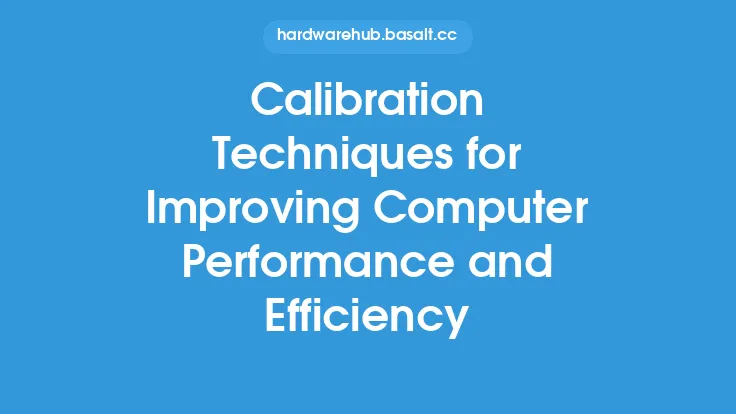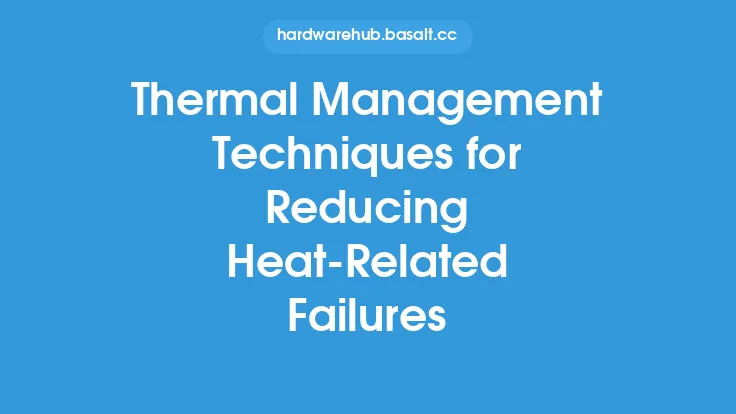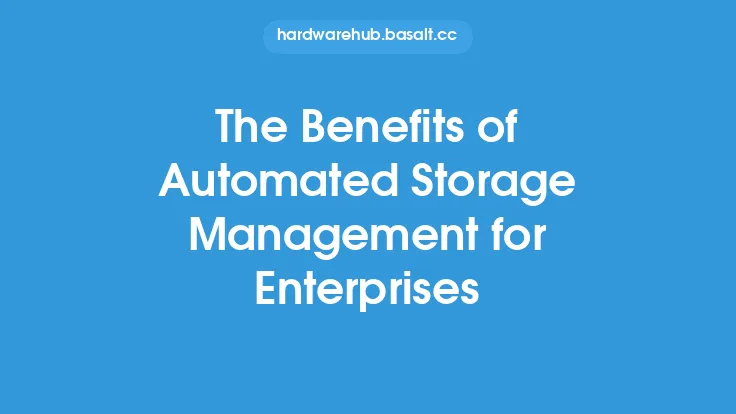Storage management is a critical aspect of maintaining a well-performing and efficient computing system. As data continues to grow in size and complexity, effective storage management techniques are essential to ensure that data is stored, retrieved, and managed in a way that optimizes system performance and reduces costs. In this article, we will delve into the various storage management techniques that can help improve performance and efficiency, and explore the technical aspects of each technique.
Introduction to Storage Management Techniques
Storage management techniques are designed to optimize the use of storage resources, reduce storage costs, and improve data accessibility. These techniques can be broadly categorized into two main areas: storage optimization and storage efficiency. Storage optimization techniques focus on improving the performance of storage systems, while storage efficiency techniques focus on reducing storage costs and improving data management. Some common storage management techniques include data compression, data deduplication, thin provisioning, and storage virtualization.
Data Compression and Deduplication
Data compression and deduplication are two storage management techniques that can help reduce storage costs and improve data management. Data compression involves reducing the size of data files to free up storage space, while data deduplication involves eliminating duplicate copies of data to reduce storage requirements. These techniques can be implemented at the file level, block level, or object level, and can be used in conjunction with other storage management techniques to optimize storage performance. For example, data compression can be used to reduce the size of data files, while data deduplication can be used to eliminate duplicate copies of compressed data.
Thin Provisioning and Storage Virtualization
Thin provisioning and storage virtualization are two storage management techniques that can help improve storage efficiency and reduce costs. Thin provisioning involves allocating storage space to applications and users on a just-in-time basis, rather than allocating a fixed amount of storage space upfront. This approach can help reduce storage waste and improve storage utilization. Storage virtualization, on the other hand, involves abstracting storage resources from physical storage devices, making it possible to manage storage resources from a single console. This approach can help simplify storage management, improve storage flexibility, and reduce storage costs.
Storage Tiering and Caching
Storage tiering and caching are two storage management techniques that can help improve storage performance and reduce costs. Storage tiering involves assigning different types of data to different storage tiers, based on performance and cost requirements. For example, high-performance data may be assigned to a high-performance storage tier, while low-performance data may be assigned to a lower-cost storage tier. Caching, on the other hand, involves storing frequently accessed data in a fast, intermediate storage location, such as RAM or flash memory. This approach can help improve data accessibility and reduce the load on storage systems.
RAID and Erasure Coding
RAID (Redundant Array of Independent Disks) and erasure coding are two storage management techniques that can help improve data protection and reduce data loss. RAID involves combining multiple physical disks into a single logical disk, to improve data protection and performance. Erasure coding, on the other hand, involves breaking data into smaller fragments and storing them across multiple storage devices, to improve data protection and reduce data loss. These techniques can be used in conjunction with other storage management techniques to optimize storage performance and improve data management.
SSD and Flash Storage
SSD (Solid-State Drive) and flash storage are two storage technologies that can help improve storage performance and reduce costs. SSDs use flash memory to store data, rather than traditional hard disk drives, and can provide faster data access and lower latency. Flash storage, on the other hand, involves using flash memory as a storage medium, rather than traditional hard disk drives. These technologies can be used in conjunction with other storage management techniques to optimize storage performance and improve data management.
Cloud Storage and Object Storage
Cloud storage and object storage are two storage technologies that can help improve storage flexibility and reduce costs. Cloud storage involves storing data in a remote, cloud-based storage system, rather than on-premises storage systems. Object storage, on the other hand, involves storing data as objects, rather than as files or blocks. These technologies can be used in conjunction with other storage management techniques to optimize storage performance and improve data management.
Conclusion
In conclusion, storage management techniques are essential for maintaining a well-performing and efficient computing system. By implementing techniques such as data compression, data deduplication, thin provisioning, storage virtualization, storage tiering, caching, RAID, erasure coding, SSD, flash storage, cloud storage, and object storage, organizations can optimize storage performance, reduce storage costs, and improve data management. As data continues to grow in size and complexity, effective storage management techniques will become increasingly important for ensuring that data is stored, retrieved, and managed in a way that optimizes system performance and reduces costs. By understanding the technical aspects of each technique and implementing them in a way that meets the needs of their organization, IT professionals can help ensure that their storage systems are running at peak performance and efficiency.





